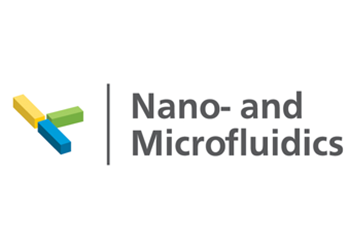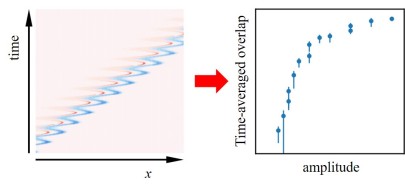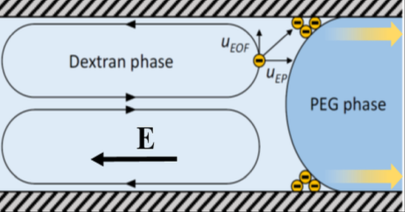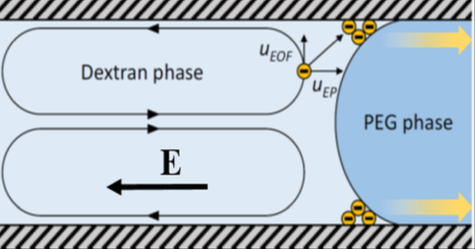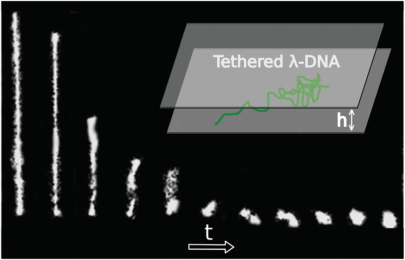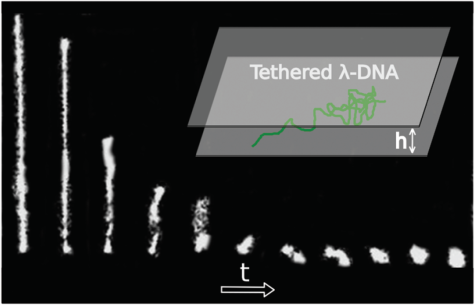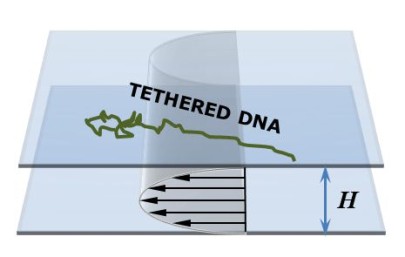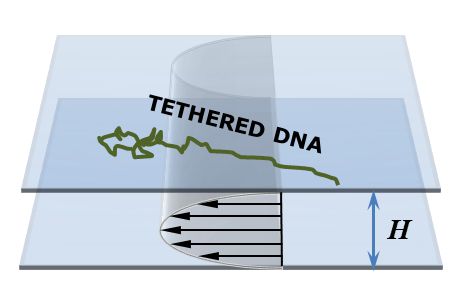Towards controlled chemical reactions between minute samples
Performing chemical reactions between minute samples is the prerequisite for a number of industrial processes, for example high-throughput screening in pharmacological research. Ideally, one would be able to perform these reactions in a very controlled manner. Among others, it is desirable to bring two reagents in contact for a well-defined time, after which the reaction is stopped and its progress is analyzed. We have developed a method that could enable such a reaction control: Two samples, separated by a narrow spacer, are transported through a microchannel by electrophoresis, where an oscillatory electric field brings the samples in contact in a time-periodic manner. The results were published in the journal Analytical Chemistry.
Detection of minute molecular samples in microchannels
In the detection of minute (bio)chemical samples, electrophoretic schemes, i.e. sample transport due to electric fields, play a big role. Detecting even smallest sample amounts during electrophoretic transport is a big challenge. We have demonstrated that knowledge about the physics of electrophoretic transport can help reducing the detection limits by orders of magnitude. The data postprocessing scheme we have developed allows extracting signals from a noisy background even in cases where, based on conventional methods, no signal is discernable. These results were recently published in the journal Analytical Chemistry.
Protein separation at liquid-liquid interfaces
The separation of proteins according to specific properties such as size plays an eminent role in many processes of the biotech industry. We have recently demonstrated a new separation process for proteins in a microfluidic device. First, a protein mixture is electrophoretically transported towards a liquid-liquid interface. The interface represents a transport resistance to the proteins, such that some species adsorb at the interface more easily than others. Protein separation can be accomplished if one species crosses the interface, while the other gets adsorbed, which was demonstrated in the paper referred to below. We believe that in the future this new method of protein separation could extend the spectrum of industrial separation processes.
Relaxation of surface-tethered polymers under moderate confinement
When long-chain polymers attached to a surface become stretched and the stretching force is released, they relax back to their coiled state within a characteristic time, denoted the relaxation time. We have shown that the polymers “feel” the presence of a second wall even if the distance between the two walls h is significantly larger than the radius of gyration of the polymers. As a result, the relaxation time increases. These results are relevant for microchannel flows where the channel walls are decorated with polymers.
Stretching of confined surface-tethered polymers in pressure-driven flow
Knowledge on the stretching and conformations of linear long-chain polymers in micro-confinement is of prime importance for applications such as functional surfaces with grafted polymer brushes or sequencing of DNA molecules. We experimentally characterized the stretching and conformational changes of surface-anchored long-chain double-stranded DNA molecules between parallel surfaces under pressure-driven flow. One main result is that the fractional extension of the molecules is a unique function of the product of the wall shear stress and the molecular contour length, with a weak influence of confinement. The experimental results are corroborated by a simple scaling analysis and coarse-grained lattice-Boltzmann / molecular dynamics simulations:

